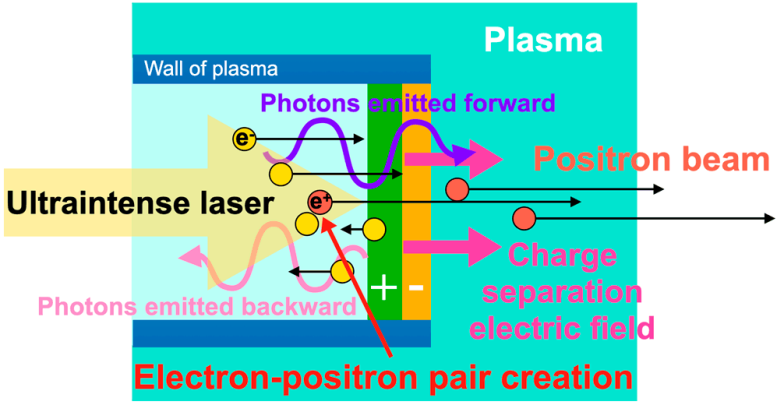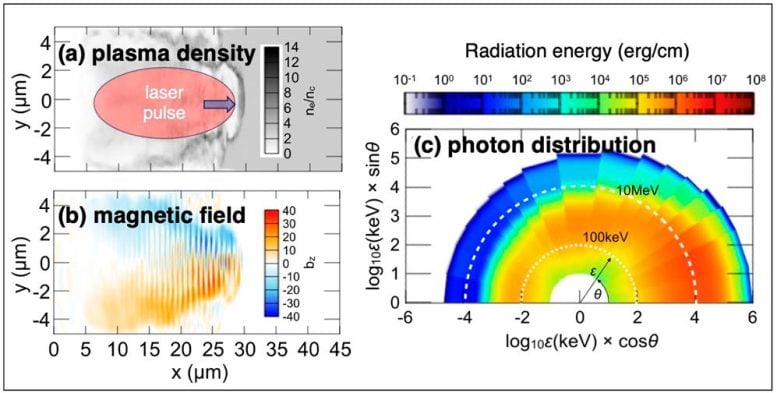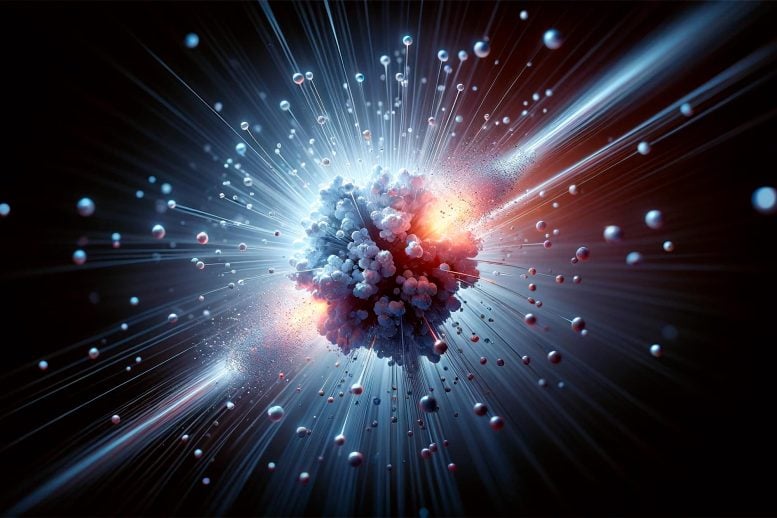Researchers at Osaka University have simulated the collision of photons with lasers, which could pave the way for creating matter from light in the laboratory. This advance in quantum physics holds promise for understanding the composition of the universe and discovering new physics. (Artist’s concept.) Image source: SciTechDaily.com
A team led by researchers at Osaka University and the University of California, San Diego used simulations to demonstrate how matter can be created experimentally from just light, which in the future could help test long-held theories about the composition of the universe.
One of the most striking predictions of quantum physics is that matter can be created from just light (i.e., photons), and in fact, objects called pulsars have achieved this feat. Directly generating matter in this way has not yet been achieved in the laboratory, but it would enable further testing of fundamental quantum physics theories and the fundamental makeup of the universe.
In a recently published study Physical Review Lettersa team led by Osaka University researchers simulated conditions such that Photon– Photon collision, using only lasers. The simplicity of the setup and ease of implementation at currently available laser intensities make it a promising candidate for near-term experimental implementation.

Image of a self-organizing photon collider driven by intense laser pulses propagating in a plasma.Image source: Sentoku Yasuhiko
Theoretically, the collision of photons is the basic means of producing matter in the universe. It is derived from Einstein’s famous equation E=mc2. In fact, researchers have used light to create matter indirectly: by accelerating metal ions (such as gold ions) at high speeds to combine with each other. At such high speeds, each ion is surrounded by photons, and as they pass each other, matter and antimatter are created.
However, experimentally producing substances by laser alone is challenging in modern laboratories due to the extremely high-power lasers required. Simulating how this feat is achieved in the lab could lead to experimental breakthroughs, so that’s what the researchers set out to do.
“Our simulations show that when interacting with the laser’s strong electromagnetic field, dense plasma It can self-organize to form a photon-photon collider,” explained Dr. Sugimoto, lead author of the study. “This collider contains dense gamma rays that are ten times more dense than electrons in plasma and a million times more energetic than photons in lasers.”

Self-organizing photon collider driven by intense laser pulses (a) plasma density, (b) magnetic channel, (c) angular distribution of emitted photons.Image source: Physical Review Letters
Photons in the collider collide with photons to produce electron-positron pairs, which are accelerated by the plasma electric field generated by the laser. This produces a beam of positrons.
“This is the first simulation of the linear Bright-Wheeler process accelerating positrons under relativistic conditions,” said co-author Professor Arefiev of the University of California, San Diego. “We believe that our proposal is experimentally is feasible, we look forward to implementing it in the real world.” “This research demonstrates a potential approach to exploring the mysteries of the universe in a laboratory setting,” said Vyacheslav Lukin, Ph.D., program director at the National Science Foundation, which supported the work. Today And the future possibilities for tomorrow’s high-power laser facilities become even more interesting.”
Applications of this work to Star Wars’ fictional matter-to-energy conversion technology remain only fictional. Still, the work has the potential to help experimentally confirm theories of how the universe is made, and may even help discover previously unknown physics.
Reference: “Positron generation and acceleration in self-organizing photon collider by ultra-intense laser pulses” Author: K. Sugimoto, Y. He, N. Iwata, IL. Yeh, K. Tangtartharakul, A. Arefiev and Y. Sentoku, August 9, 2023 Physical Review Letters.
DOI: 10.1103/PhysRevLett.131.065102
#Emc #alive #simulated #laser #creation #matter
Image Source : scitechdaily.com
